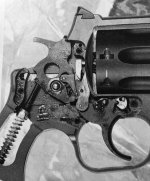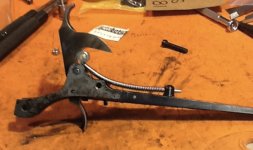Walt Sherman was a great guy. A friend had purchased a PPC revolver from an FDLE acquaintance of ours, and we were shooting one afternoon when I tried it out. I was amazed at how well it shot, and the trigger on it was positively amazing. You could pull double action and hold it right at the release point with no effort at all. The action was so slick - you really have to experience it.
The barrel was marked Sherman Custom PPC, and I immediately searched for his company. It was the early days if the Internet, and I found him without any problem. After talking to him on the phone and discovering he was only eighty miles away in Tallahassee - I immediately ordered a new 14-6 and sent it over. I asked that he work his magic on it and do everything he performed on his PPC customs short of changing the barrel.
Walt called about two weeks later, and asked if the Brown Lantern restaurant was still open in my town. I indicated that it was, and he said he would like to deliver the model 14 to me instead of shipping it. He met me at my office, and we had lunch and visited all the local gunshops that afternoon.
I ended up having him build me a custom rifle on an FN action. Walt wasn't as well known for his rifles, but he built mine in the old English classic style. He did it all from barreling, stockmaking, metalwork, and bluing. It was as nice as anything turned out by the best makers in Europe. I sold it to one of his relatives when he passed as the relative regretted never having one of Walt's rifles. Really wish I still had the rifle, but it just seemed like the right thing to do.
Walt was definitely one of the good guys, and it was amazing to watch him in the shop. I enjoyed many afternoons at his place, and my 14-6 will be around until I'm gone.
I have ran a few thousand wadcutters through this one. Anyone who has had the pleasure of shooting it breaks out with a big WOW afterwards.
Damn glad to have met him.






